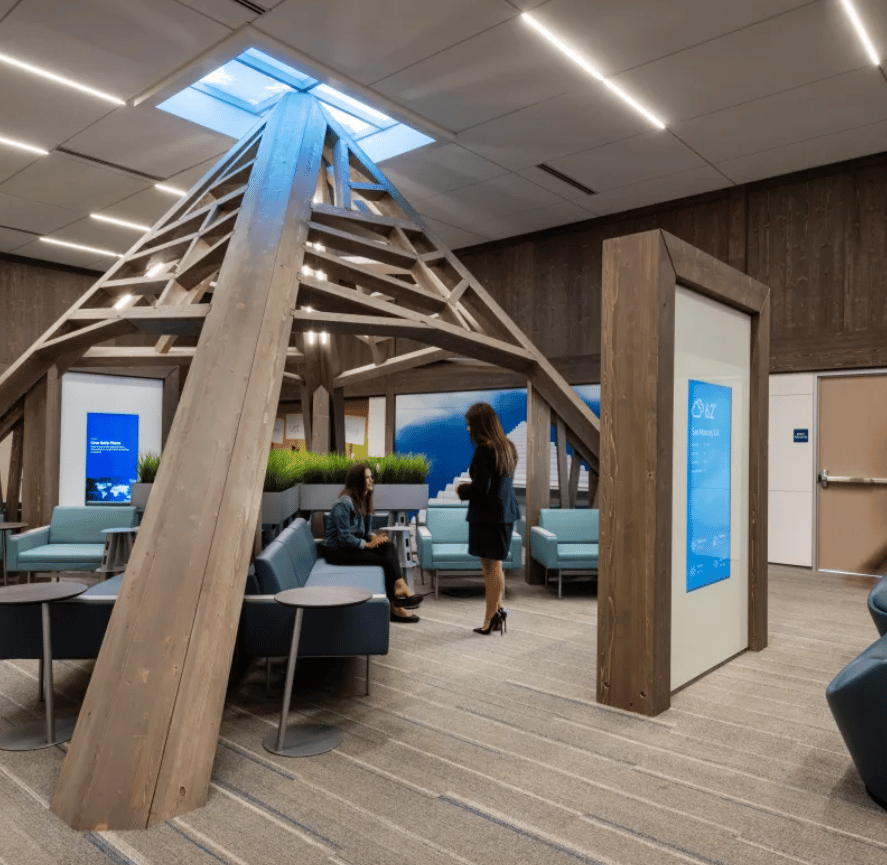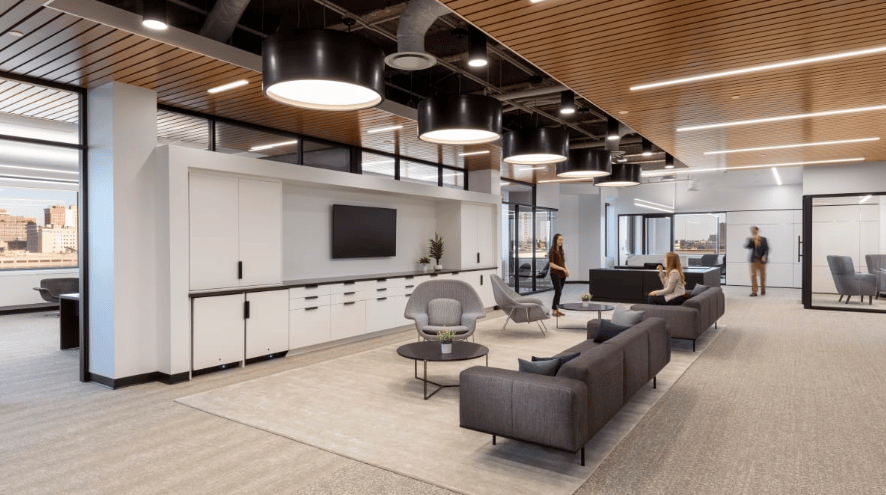
Enter a fast food restaurant and often you’ll be faced with a sea of tall tables and chairs, sometimes immovable and secured to the ground. It’s a design choice that makes architect Karen Braitmayer feel unwelcome.
“I sit in a wheelchair, and that is not a place that makes me feel like I can stay,” she says. Without access to the table top, Braitmayer can’t comfortably chat with friends, or sit and eat a meal at the same level as them.
Many people don’t have to think twice about walking into a restaurant, workplace, healthcare facility, or school. But if accessible design isn’t considered when a space is built, these spaces can be challenging, and ultimately exclusionary for those with disabilities.
As founder and managing principal at Studio Pacifica, Braitmayer and her team of accessibility consultants work with architects and contractors to create barrier-free interiors that are inclusive, welcoming spaces for everyone.
And she finds that sharing personal examples — like that of the restaurant — helps design and built environment teams understand disability needs through the lens of her own lived experience.
While inclusion is critical in design and construction these days, Braitmayer believes accessibility should be part of the DE&I conversation as well. “‘Diversity, Equity, and Inclusion’ should really be ‘Diversity, Equity, Inclusion, and Accessibility. Those are all wrapped up together.”
After all, how can you say you’ve built an equitable and inclusive environment that meets the needs of diverse occupants, if people with disabilities can’t get through doors or otherwise fully engage with the space?
A multi-industry shift towards building more inclusive space
Most designers, developers, and construction teams today want to invest in a build process and outcome that invites communities who’ve historically been excluded, to experience a more comfortable and inclusive built environment.
So how does accessibility fit in this conversation?
Braitmayer thinks accessible design has come a long way in the past three decades since the federal American with Disabilities Act (ADA) was passed. But there’s still plenty of room for improvement to create a world with spaces that are fully accessible to people with disabilities, as well as those who are neurodivergent.
For instance, using a public restroom is a universal human requirement. But it’s still not unusual to enter a restroom and find all amenities in the space have been standardized, says Braitmayer.
“All the sinks are the same height, all the paper towel dispensers are the same height. But why do we do that? When humans come in different sizes and shapes, we could have a low paper towel dispenser and a high paper towel dispenser. We could have a soap dispenser that’s close to the edge of the sink, and one that’s back on the mirror.”
To design and construct whole buildings that enable a variety of human experiences, the ADA and state building codes with accessibility considerations are a good place to begin planning.
But to ensure you are creating truly inclusive spaces, you need to look beyond these legislated guidelines and consult with accessibility advocates and advisors as well, Braitmayer says.

